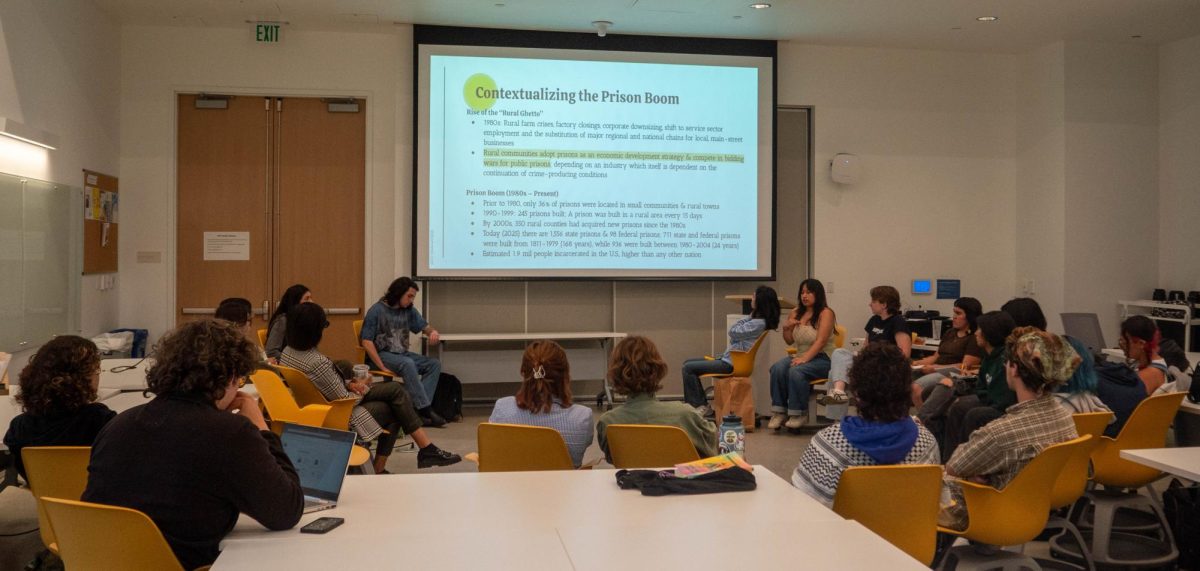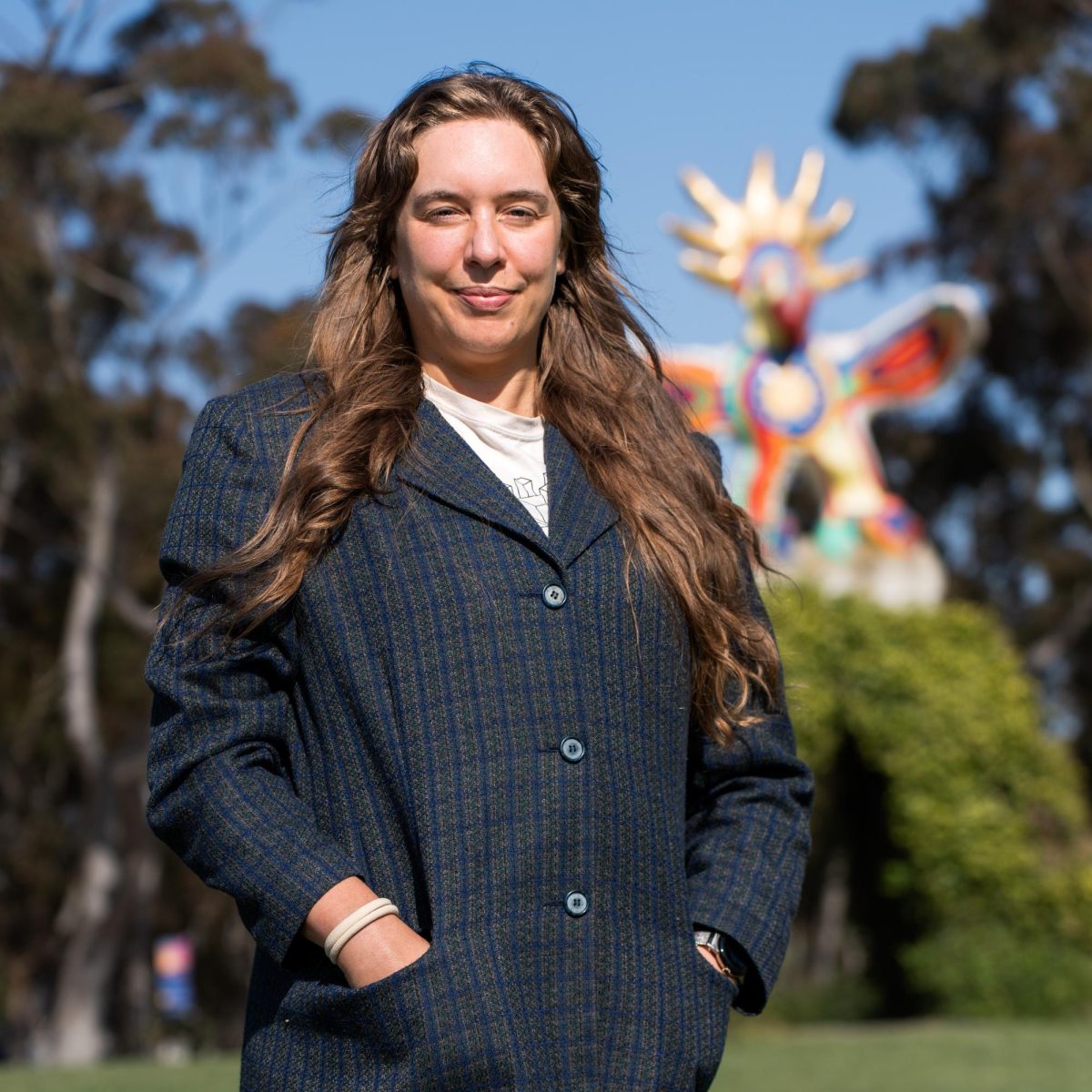In 2012, UCSD was ranked the third “greenest” university by Sierra magazine, making a significant jump from the 15th spot that it occupied in the previous year. A variety of changes in energy supply, transportation and waste management likely led to our rise in the ranks. But another significant factor contributing to our ascent through the green rankings might be the recent explosion in student-run gardens around campus during the past few years.
Nestled in between buildings and concealed among eucalyptus groves, these “hidden” gardens are now in nearly every college. They were all created by groups of students.
First came the Pepper Canyon Urban Farm in 2009, which was set to occupy 8,800 square feet in Sixth College. Later that year, Roger’s Community Garden, previously known as the Neighborhood Community Garden, was officially established on a quarter-acre of land behind the Che Cafe in Revelle College. In 2010, Earl’s Garden was inaugurated on a small patch of dirt among the apartments in Earl Warren College. And most recently, Ellie’s Garden at Eleanor Roosevelt College, located between two residential halls, followed suit in 2012.
The road to establishing these gardens, though, hasn’t always been smooth.
Roger’s Community Garden — commonly known as RCG — faced several challenges from the very beginning. The hillside it now resides on was first designated as garden space in 1992. But after several student and community organizations became involved, expanding beyond the set boundaries and felling some of the surrounding eucalyptus trees, they were prohibited from continuing their work. The Che Cafe then acquired the land for gardening but was ultimately unable to sustain it. In 2008, the Roots & Shoots student organization at UCSD took over, which eventually led to the collaboration of a group of undergraduate students in 2009 to promote a viable garden.
Currently, the garden grows a variety of plants, including mint, artichoke, guava, pomegranate, cactus, loquat, onions and lettuce. The types of plants grown throughout the year depend largely on the season. As a result, students will find many of the same crops being cultivated at the other gardens on campus.
“Right now, we have a big, huge plot of onions — Red Creole onions,” RCG coordinator and UCSD junior Erik Hauenstein said. “They’re really delicious. They get really plump, and they’re wonderful.”
In fact, there are so many onions that RCG growers plan to sell them to the Food Co-op and even some of the campus dining halls. The proceeds will go toward maintaining the garden.
Supplying campus eateries with fresh produce from UCSD gardens supports the effort that Housing, Dining and Hospitality is continually making to serve sustainably grown food. The UC Office of the President requires that 20 percent of our food must come from sustainable sources by 2020. Though this may not seem like much, only 1 to 5 percent of food served at dining halls nationally is sustainable, according to a 2010 poll published in Sierra magazine.
According to HDH Sustainability Manager Krista Mays, about 19 percent of the food that HDH eateries served and sold in 2012 was classified as sustainable food. At this rate, we’re on track to becoming 30 percent sustainable by 2020.
“We’re striving to exceed [the requirement] and to continue to bring in more sustainable foods that students want to eat,” Mays said.
Hauenstein also said that community gardening provides an opportunity to teach his fellow students about sustainability.
“My goal is to ensure that I’m getting people to come, and that when people do come, they’re taken care of and have the opportunity to learn,” Hauenstein said. “They can take that knowledge with them and take it home and spread this. I think that’s the pivotal thing. That’s how knowledge and ideas have been passed down for thousands of years with humans.”
All of the gardens rely on student volunteers who meet either once or twice a week to ensure the maintenance and upkeep of their crops. Over the past two years, some student organizations have carried out larger projects to enhance the gardens and further their sustainability.
The UCSD chapter of Engineers for a Sustainable World built a new compost system for RCG to replace its old, rotting compost pit. ESW also designed a sink that conserves and reuses water. This is now used in place of the valves that had constantly leaked water.
Collective ownership has always been a guiding principle at the gardens. However, beginning this academic year at RCG, students have been offered the option of paying $35 to lease individual plots of their own for the school year. All the proceeds are funneled back into the garden to buy new tools and make upgrades.
The three gardens in Revelle, Warren and ERC appear to be thriving. But the prospects of the garden in Sixth College don’t look promising, according to Hauenstein.
“The space is actually reserved for the rail line,” he said. “There’s some sort of rail line that UCSD is interested in putting in there at some point to connect. [The garden] will be decimated, I think.” [Editor’s note: the Guardian could not verify this claim.]
Hauenstein stated that contruction of the rail line is continually being pushed forward, so gardeners don’t know if their plots will last.
As for the other gardens, there shouldn’t be much to worry about.
“Both the ERC garden and Earl’s Garden are stuffed in the middle of buildings, so they’re pretty safe,” Hauenstein said. “[Roger’s Community Garden], on the other hand, could be a potential development spot for UCSD if they feel like it in the future. But the nice thing is that if they do decide to do that, they’re actually required to give us more space somewhere else. That’s part of our agreement.”






